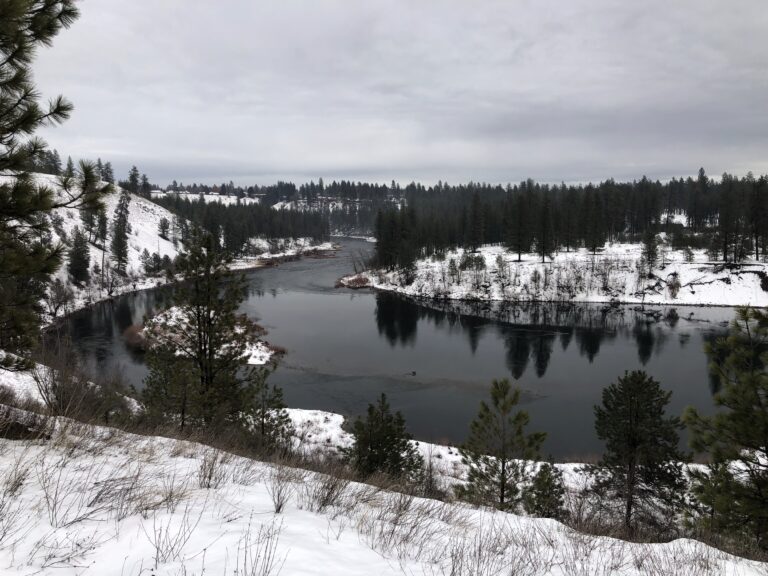On hot summer days, hundreds of people float, raft, and swim in the Spokane River. Yet the question still lingers. Just how safe is it to swim in Spokane’s beautiful but once heavily polluted river?
“The more that people play on the river, the more they’re likely to protect it and think about what they’re doing around the house and elsewhere that impacts it,” says Jon Wilmot, co-owner of FLOW Adventures who works as a river guide on the Spokane. Wilmot says he and his guide staff probably spend more days on the Spokane River than anyone else. He believes it’s safe and hasn’t experienced any ill effects from years of recreating on and working in the water.
During early season boating in past years, Wilmot says the river could be gross. “The sewage overflows used to pump in while we were kayaking. But I didn’t see any of that this year,” he says, referring to the City of Spokane’s stormwater and combined sewer overflows that in the past would discharge into the river after heavy rains.

Fortunately, the city is trying to implement an integrated plan to reduce the amount of stormwater and sewage that ends up in the river. “They need to do this by 2016, and they have a really good plan,” says Rick Eichstaedt, an environmental lawyer with the Spokane-based Center for Justice. According to Eichstaedt, the city is trying to work with stakeholders like CFJ and state agencies to help implement this plan despite challenges they’ve encountered with funding the work.
Another concern about the Spokane River’s water quality is the presence of heavy metals, which have historically washed downstream from the Coeur d’Alene River basin from years of mining in the Silver Valley. “I wouldn’t eat the fish from the Spokane River,” says Eichstaedt. But he notes that the heavy metals and PCBs aren’t something that is easily absorbed into your skin when you’re swimming. “You’ve got to eat the fish or the sand,” he says.
It’s plenty safe to swim in with a little common sense, says Eichstaedt. “If you’ve got little kids, don’t let them eat the sand or dirt. Use common sense like you would swimming in any natural water body – take a shower afterwards and clean up,” he says.

As for the presence of toxic metals and other chemicals, it’s getting better. Brook Beeler, communications manager for the Department of Ecology’s eastern region office emphasizes that a lot of progress has been made to clean up the Spokane River. “None of what we’re working on are swimming hazards; the only recreational inhibitor is the fish. The Spokane River is swimmable and safe to recreate in. And we encourage it, because when you get to know your resource, then you want to protect it.”
Beeler notes that over the past 15 years our community has come together to find solutions for improving and preserving the river. Improvements range from cleaning up beaches that were contaminated with heavy metals to water quality projects resulting in increased dissolved oxygen that benefit fish and other aquatic animals.
“There are more improvements to come,” Beeler says. As an example she cites the City of Spokane’s innovative approach to achieving a cleaner river faster with a plan that targets combined sewer overflow elimination, advanced wastewater treatment, and significant stormwater mitigation. Beeler also points to the Spokane River Regional Toxics Task Force, a diverse group of stakeholders who are working together to identify and reduce sources of PCBs and dioxins that can end up in the river, as the best bet for making even more water quality improvements on the Spokane River in the future. //













